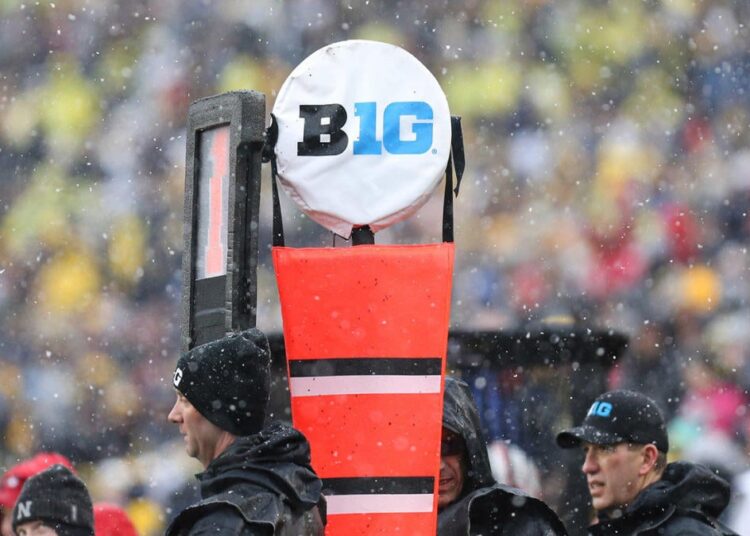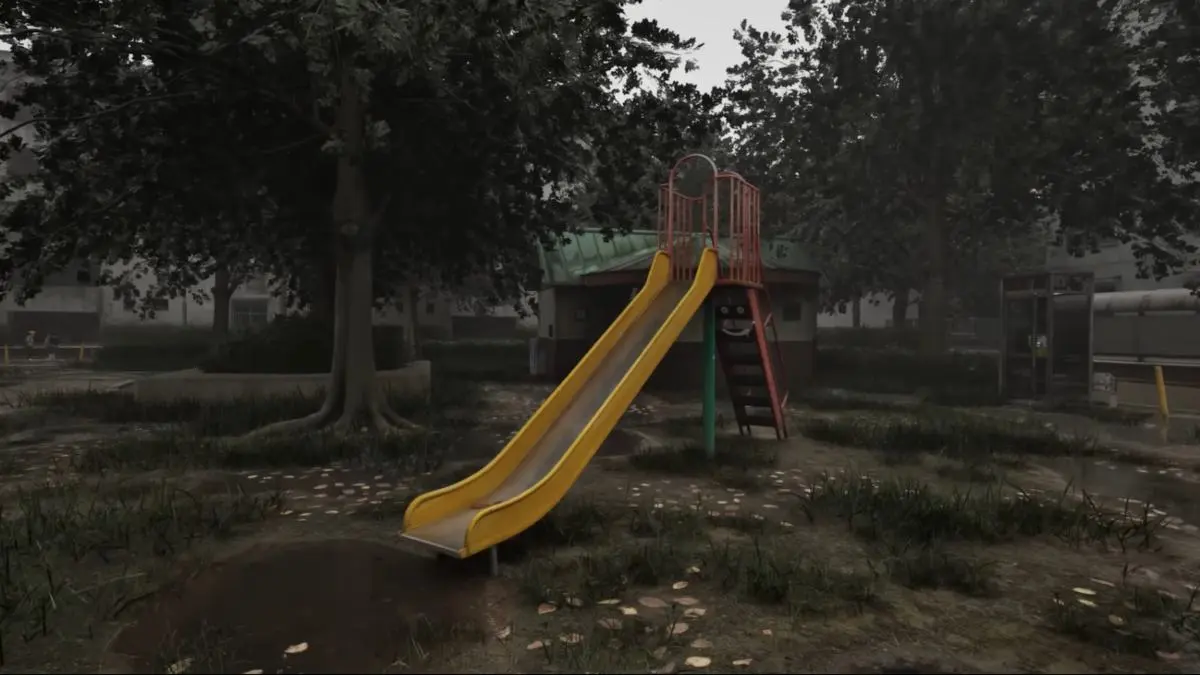USC and UCLA will be fully engrained as members of the Big Ten in July 2024. The move alone changes the very foundation of the conference, and as somebody who grew up following the Big Ten, it’s one I haven’t fully wrapped my head around yet. While the addition of the two West Coast schools did help the Big Ten land a historic television deal, that was the easy part.
Now the league has to figure out how to make it all work, including the schedules. Even with expansion to 14 schools over the last decade, the Big Ten remains a league with established traditions, many of which will be disrupted in the new league. Old rivalries will be replaced with new ones. We will see a new format for determining the conference champion as the league attempts to put itself in the best possible position amid a new world that will feature a 12-team College Football Playoff format.
The Big Ten hasn’t made any scheduling announcements, but it’s widely expected that the current division format will be scrapped. However, the nine-game conference schedule the league has used for a few years will remain, as there’s an easy format available within it to ensure all 16 schools play each other regularly.
That’s the 3-6-6 model. Each school has three “permanent rivals” they play every season. They then split the remaining 12 conference schools and play every other year, so you never go more than two years without playing a school or four without hosting one. But, again, that part is easy.
The tricky part is figuring out who the three “permanent rivals” are. I do not envy those deciding upon this because I can guarantee that all 16 fan bases and schools will be upset. I know because I spent a lot of time trying to figure out a scheduling format that made the most sense for all involved and kept things in a competitive balance. It turns out it’s impossible!
Texas and Oklahoma make much more geographic sense in the SEC and enter the league in 2024 with established rivalries. That’s not the case with USC and UCLA. Trying to come up with three logical rivals for them in the Big Ten was like traversing the Rocky Mountains, which both California schools will have to do for every road trip but one per season.
While there was no perfect solution, I set out with a few key things in mind: history, geography and television. We can’t ignore the elephant in the room. Three networks, including CBS, will be broadcasting Big Ten games, and they’re paying a lot of money to do so. They’ll have a say in matchups they want to see every year.
After tinkering, this was a solution I believe best addresses what the fans want, the schools want and what the networks want.
On the Cover 3 Podcast, we addressed this from a more holistic perspective. Watch us perform the same task as a group (though we came to different results) at the end of this story.
Finding rivals for USC, UCLA
This was the most challenging part, but I came upon the rivals for each following a simplistic plan. I didn’t want to overload either with more travel than they’ll already face, so for their other two rivals, I wanted to lean on teams that were more in the western half of the league. Hence, UCLA gets Nebraska and Illinois, while USC gets Northwestern and Michigan State. I know Michigan State doesn’t count as “west,” but another factor was in play.
The Big Ten is a conference deep in rivalry and rivalry trophies, so there’s no better way to establish a Big Ten feel to USC and UCLA than giving them a trophy game. So, Michigan State is the obvious answer. The idea came to me the day the move was announced.
There is simply no way we can not let the Trojans and Spartans be rivals. If I told you that my primary goal for writing this story was to increase the chances of the Big Ten seeing the idea and acknowledging its brilliance, I’d only be half-joking.
As for USC’s three rivals, some will argue that they’re too “easy,” and I get that. I had other models that included either Ohio State (the Big Ten team USC has played the most games against) or Michigan and Penn State, but giving them one of those three would make things too difficult. I assume USC plans to continue playing Notre Dame every season. Knowing that, if I’m the Big Ten, I ensure that USC’s schedule rotates Ohio State and Michigan. Make sure the Trojans play one of them every season, but not both. The USC/Notre Dame game would likely be on NBC every year, while the game against Ohio State or Michigan would be on Fox or CBS. Of course, Penn State will then be paired with either Ohio State or Michigan in alternating years, making for a difficult schedule, so I kept that in mind when creating USC’s permanent rivals.
As for UCLA, Nebraska is the closest campus, and it’s the Big Ten team UCLA has played the most (13 games). The second most? Illinois. So they’re two “western” opponents with a history of facing the Bruins.
Keep as many trophy games as possible
As things stand, including USC and UCLA’s Victory Bell, the conference will have 17 trophy games when it expands. Of the 17, 10 will be at risk every season in this format. That doesn’t seem like nearly enough, and believe me, I tried to get more in there. However, I created a new trophy game already with the Trojan Horse, and some of the trophies that didn’t make the cut weren’t being played annually as it is.
The Illibuck (Illinois/Ohio State), Little Brown Jug (Michigan/Minnesota), George Jewett Trophy (Michigan/Northwestern) and Governor’s Victory Bell (Minnesota/Penn State) were already disrupted by divisions. The $5 Bits of Broken Chair Trophy (Minnesota/Nebraska) is a new trophy that came to be thanks to a Twitter rivalry between Goldy Gopher and “Faux Pelini,” a parody of former Nebraska coach Bo Pelini. While funny, it’s not like it was a trophy steeped in tradition.
The only two rivalry trophies played annually that were cut were the Old Brass Spittoon (Indiana/Michigan State) and Land Grant Trophy (Michigan State/Penn State).
Ohio State has a tough road
If you look at the programs you consider the Big Ten’s historic powers and national title contenders in the new league (Michigan, Ohio State, Penn State, USC), it’s safe to say Ohio State got the toughest draw when it comes to permanent rivals. It gets Michigan and Penn State every season and will rotate in USC every other year. Somebody will have a more arduous path, and I already discussed USC’s situation with a Notre Dame game every season.
When it came to Penn State, the Nittany Lions got both Rutgers and Maryland for geographic and historical reasons. It may surprise you that Penn State has played more games against Maryland (46) than any other team in the Big Ten. Also, the Nittany Lions have only played Ohio State (37 games) and Michigan State (36) more times than they have Rutgers (33).
With Michigan, you have to keep the Ohio State and Michigan State games. While I’d have preferred to make Michigan’s third rival Minnesota, giving the Gophers Iowa, Wisconsin and Michigan felt like too much, so I settled on Indiana.
This left Ohio State facing both Michigan and Penn State every season. It’s a demanding schedule, but again, we can’t forget television in this process, and the networks will want those games every season, considering the ratings they draw. I’d have preferred to match up the Buckeyes with Illinois for their third rival, but I prioritized giving UCLA shorter trips over the Illibuck.
Permanent rivals shouldn’t be permanent
I’ve made a point to put quotation marks around “permanent rivals” every time I mention them because I don’t think they should remain permanent. The fact that finding three regular opponents for each of the Big Ten’s schools was such a difficult exercise only highlights why the conference should remain flexible.
While some rivalries must be played yearly (hello, Ohio State/Michigan), the Big Ten would be wise to reassess things every few years. Rivalries can develop at any point due to where a program is at a given time. If it were up to me, I’d work in a window every four years that allows the conference to change things up for the next cycle to ensure I’m getting the best possible games.
Watch below and subscribe to the Cover 3 Podcast where we break down what the Big Ten schedule could look like when USC and UCLA join ahead of the 2024 season.
Read the full article here

























